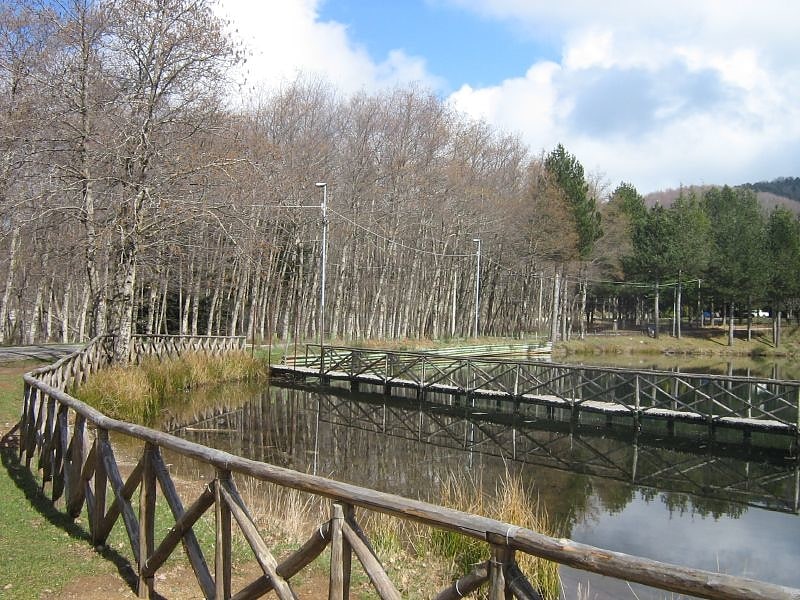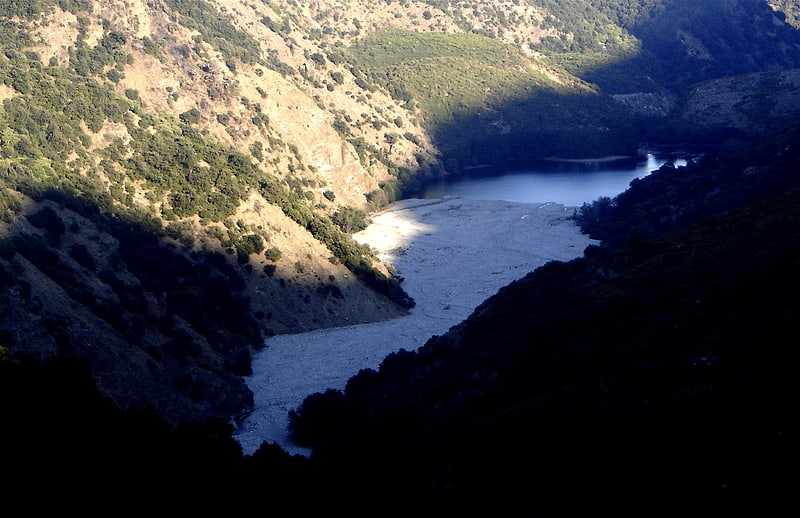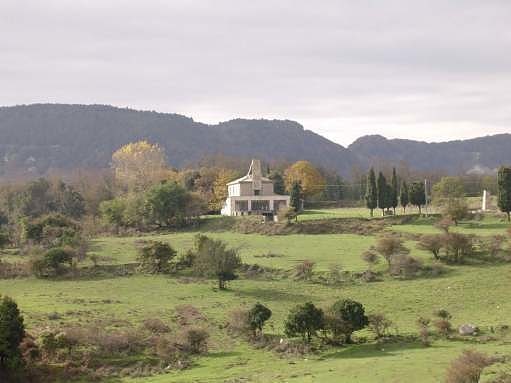Discover 5 hidden attractions, cool sights, and unusual things to do in Aspromonte National Park (Italy). Don't miss out on these must-see attractions: Rumia Lake, Territorial Abbey and Sanctuary of Santa Maria di Polsi, and Aspromonte. Also, be sure to include Costantino Lake in your itinerary.
Below, you can find the list of the most amazing places you should visit in Aspromonte National Park (Calabria).
Table of Contents
Rumia Lake

Also known as: Lago Rumia
Lake in Italy. Rumia Lake is a lake at San Roberto, Province of Reggio Calabria, Calabria, Italy.[1]
Address: Via Rubona, Aspromonte National Park
Territorial Abbey and Sanctuary of Santa Maria di Polsi

Also known as: Santuario della Madonna di Polsi
Sanctuary in Italy. The Sanctuary of Our Lady of Polsi, also known as the Sanctuary of Santa Maria di Polsi or Our Lady of the Mountain, is a Christian sanctuary in the heart of the Aspromonte mountains, near San Luca in Calabria, southern Italy. It was founded by Roger II of Sicily in 1144. The church and monastery are situated in a spectacular setting at the bottom of a gorge at an altitude of 865 metres surrounded by high mountains on the east side of the Montalto the highest peak of the Aspromonte. The sanctuary is difficult to reach. Until some years ago Polsi could only reached by foot.[2]
Aspromonte

Massif in Italy. The Aspromonte is a mountain massif in the Metropolitan City of Reggio Calabria. The literal translation of the name means "rough mountain". But for others the name more likely is related to the Greek word Aspros, meaning "white". It overlooks the Strait of Messina, being limited by the Ionian and Tyrrhenian Seas and by the Pietrace river. The highest peak is Montalto. The constituting rocks are mostly gneiss, and mica schists, which form characteristic overlapping terraces. The massif is part of the Aspromonte National Park.
In the short coastal strip citrus fruits, vine and olives are grown, while at high elevations the vegetation is composed mostly by oak and holm oak under 1,000 m, and by pine, Sicilian fir and beech over it. Olive trees grow in abundance. Also, the rare bergamot, the lemony-yellow fruit used in perfumes and flavoring for Earl Grey tea, only grows in the southern Aspromonte.
Points of interest include the Gambarie ski resort (1,311 m) and the Sanctuary of Our Lady of Polsi, in the comune of San Luca. Part of the population known as the Griko people have retained Greek culture and language (the so-called Griko language).
Giuseppe Garibaldi, landing here with 3,000 volunteers in his march towards Rome, was defeated and captured on August 29, 1862, in the Battle of Aspromonte.
In 2021, Aspromonte was designated as a Global Geopark by UNESCO, the United Nations Educational, Scientific and Cultural Organization. In the same year, several people died as a result of various fires due to climate change and high temperatures.[3]
Costantino Lake

Also known as: Lago Costantino
Lake in Italy. Costantino Lake is a lake in the province of Reggio, Calabria, Italy.[4]
Eremo San Nicodemo

The shrine of St. Nicodemus, on the Limina plateau,is the place where St. Nicodemus lived. In 1501, the saint's relics were moved to the Basilian grange of San Biagio in Mammola. Following the 1783 earthquake, the relics were moved to the Matrice church in Mammola, to the chapel of St. Nicodemus. It rises 703 meters above sea level.